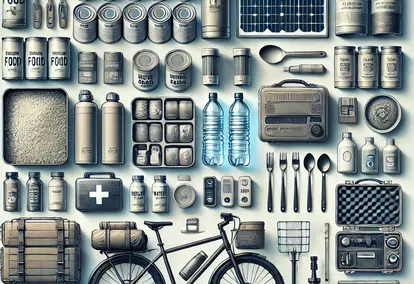Category:
A Beginner’s Guide to Emergency Preparedness: 10 Essential Steps to Protect Your Family

In today's unpredictable world, preparing for emergencies is no longer just an option—it's a necessity. From natural disasters and power outages to economic downturns and personal crises, having a solid preparedness plan can make all the difference in ensuring your family's safety and well-being. While the idea of prepping might seem daunting at first, the good news is that it doesn't have to be expensive or complicated. By taking a few thoughtful steps, you can start building a foundation that will help you weather unexpected events with confidence and peace of mind. Here are 10 essential steps to get you started on your journey to emergency preparedness:
10 Steps to Emergency Preparedness:
- Assess Your Risks: Identify the most likely natural, personal, and man-made disasters that could affect your area.
- Set a Budget for Preparedness: Determine how much you can afford to spend on emergency supplies without going into debt.
- Start with Food Storage: Aim for a minimum of one month’s supply of non-perishable food items like canned goods, rice, pasta, and herbs.
- Store Essential Non-Food Items: Stock up on cleaning supplies, extra medications, pet food, and other daily necessities.
- Ensure Adequate Water Supply: Store at least two gallons of water per person per day using sturdy containers, such as cleaned two-liter soda bottles or five-gallon water containers.
- Prepare for Power Outages: Have backup power sources like solar lanterns, battery packs, and off-grid cooking methods like solar cookers or rocket stoves.
- Build a Medical Kit and Learn First Aid: Equip yourself with a comprehensive first aid kit and get trained in basic first aid and CPR.
- Stock and Rotate Fuel Supplies: Keep gasoline and other fuels properly stored and rotated using a simple management plan.
- Maintain Vehicle Readiness: Regularly service your vehicle, and keep it stocked with emergency items like blankets, water, cash, and maps.
- Have a Backup Transportation Plan: Consider alternative transportation like bicycles to ensure mobility when cars are not an option.
Conclusion
Emergency preparedness is about taking proactive steps to protect yourself and your loved ones from unforeseen events. By following these 10 steps, you can create a comprehensive and practical plan that will help you navigate any crisis with greater ease. Start small, stay consistent, and continually reassess your needs and resources. With careful planning and a little effort, you can achieve peace of mind knowing you're prepared for whatever life throws your way.
Like what you see? Share with a friend.
SEE RELATED POSTS





